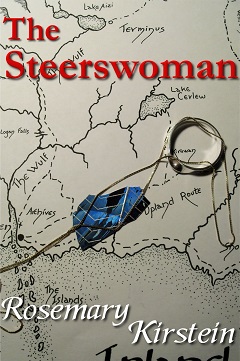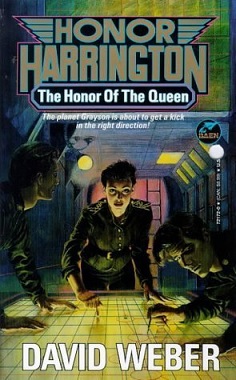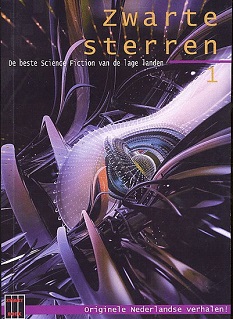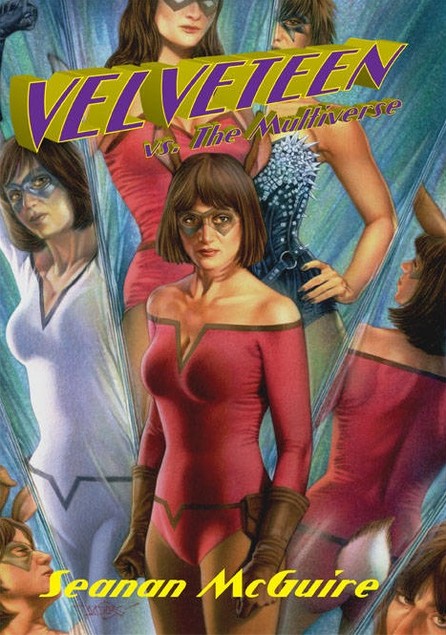
The Steerswoman
Rosemary Kirstein
279 pages
published in 1989
As long as I’ve been online and talking to other fans I’ve been hearing about The Steerswoman, how it’s one of those great lost books of science fiction and how sad it was that it had fallen out of print, how everybody who read it loved it; I never heard anybody say anything bad about it. Now, finally, after twenty years of hearing this I had the chance to judge for myself and you know what? Everybody was right. And if you want the chance to see for yourself why this book is so highly rated, the ebook is very reasonably priced.
But reading The Steerswoman, after having heard so much about, brings on a strange tension. As with any such book, you come into it with a certain knowledge about it, an expectation about how the plot would roughly develop, somewhat of an idea of the central gimmick of the novel, of what makes it special. It makes me wonder how I would’ve read The Steerswoman had I stumbled over it in 1989, before I had that knowledge. So erm, for any reader who doesn’t know about it, do me a favour and read it before you read the rest of this post and tell me what you think? Don’t read on, just go out and buy it from the link above.
The Steerswoman starts out as any ordinary fantasy novel, with a map in the front and the story opening with our protagonist Rowan, the titular steerswoman, sitting in the common room of an inn talking to the innkeeper about a mysterious blue jewel he found some years ago. Steerswomen, as well as the occasional steerman, are people dedicated to curiosity, asking questions of everyone and having a duty to answering anybody else’s questions in turn. Not answering a steerswoman’s questions is taboo and can have you banned from asking any steerswoman at all. Meanwhile in one noisy corner of the common room a band of Outskirters — nomadic goat herders and occassional raiders living on the outskirts of the settled regions of the world — are telling stories as Rowan is examining the jewels, when she notices the storyteller, a woman called Bel, wearing a silver belt worked with the same kind of jewels.
Rowan talks to Bel and ask her where these jewels were found and in her short conservation with the direct, open and clearly intelligent barbarian comes to like her enough not to hesitate when Bel proposes to travel together back to Rowan’s home, the Archives of the Steerswomen order. Only a day out from the inn however they’re attacked by one of the Red soldiers who’d also been at the inn the previous day, an ambush Rowan likely wouldn’t have survived without Bel. A few days later, the inn they’re staying in at the harbour town from which they’ll take passage for the next leg of their journey is attacked by dragons, which is something that happens but not normally in the middle of town. Rowan isn’t slow to draw the conclusion that somebody is after them, or her and the cause is likely to be the strange blue jewels she had become fascinated by.
She also has a likely subject for who might be behind the attacks, as their first assailant was in the employ of a Wizard of the Red. Wizards are incredibly powerful people, whose powers and spells help both protect from oh say, dragon attacks and keeps them above and beyond the law. Between them and the steerswomen there’s always been a wary sort of understanding, but clearly those jewels are important enough to break this truce. But is it the jewels themselves or is it their origin? As far as Rowan can tell from knowning where they were found, it’s as if some enormous giant had flung them halfway across the world…
Clearly there’s something important about those jewels and to find out what, it’s equally clear Rowan will have to resort to something any steerswoman abhors: subterfuge. In disguise she and Bel will try and get to the largest sources of the stones in the Outskirts and it’s while journeying to this that they meet up with Will, a young man hoping to apprentice with a wizard. A young man clever enough to have invented a magic powder on his own, a power packed with spells that are released if fire is introduced to it…
That’s not the first hint that the world of The Steerswoman isn’t quite the medievaloid fantasy world it first looks like, but it is the most blatant up till then. The blue jewels themselves, always set in some metal fitting seem remarkably like some sort of circuitry, while some of the hints about the nature of the world itself suggests a conflict between a clearly terrestrial ecology and something more …alien… shall we say?
Not to mention the Guidestars, two satellites that orbit the world and from which travellers get their bearings. Is something that useful truly a natural phenomenon or is it something more artificial?
Of course to Rowan and Bel these things are either part of the natural order of the world, only suggestive to the reader, or some form of magic, but not a static, incomprehensible magic. Neither may understand themselves how this magic works, but it is clear that the wizards do, to a certain extent, while as a reader it’s clear that some of this magic is something else entirely, recognisable from real life or, well, science fiction.
Now the question for me personally is, all those hints Kirstein has woved so skillfully into the story, would I have found them without the foreknowledge I’ve gotten from two decades of people talking to me about it? How much would’ve I found on my own? I genuinely don’t know, nor does it matter much. I’m sure I would’ve picked up something, especially after the introduction of William, but in any case I would’ve enjoyed a great story.
One of the highlights of that story being the relationship between Rowan and Bel, two very different woman, one a scholar, the other a warrior, who built up an intense friendship, the sort of friendship between women that’s a rarity to see portrayed in science fiction or fantasy. There either isn’t the second woman, somebody close to the protagonist, to form that friendship with, or it would be a romantic relationship. Nothing wrong with the latter of course, but it’s nice to see a true, non-romantic friendship too.
The Steerswoman is a wonderful novel and I can see why it’s such a favourite of so many people, a comfort read even. Rosemary Kirstein has an accomplished voice and her writing settles over you like a warm cloak in those opening scenes, setting you at ease before she puts the knife in. It’s not entirely perfect, there’s a torture scene I could’ve done without, but on the whole this was a novel I couldn’t stop reading while not wanting it to end either.



